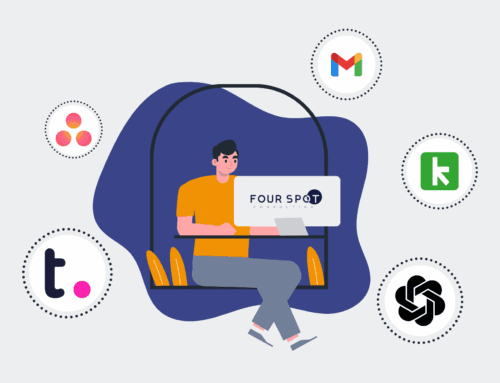Automate Your Workflow: Sync Acuity Scheduling with Google Contacts
Introduction to Workflow Automation
Have you ever felt overwhelmed by managing multiple tasks across different platforms? If so, you’re not alone. Many professionals struggle with keeping their schedules organized, especially when dealing with separate applications for appointments and contact management. This is where workflow automation steps in to save the day.
Workflow automation refers to the use of technology to perform repetitive tasks without human intervention. By synchronizing your tools, like Acuity Scheduling and Google Contacts, you can streamline processes, reduce errors, and free up time to focus on what really matters. Let’s dive into how this magic happens and how you can benefit from it.
Understanding Acuity Scheduling and Google Contacts
Acuity Scheduling is an online appointment scheduling software that helps businesses manage appointments more efficiently. It offers features like calendar syncing, automatic reminders, and client management, making it a go-to tool for professionals who rely heavily on smooth scheduling operations.
On the flip side, Google Contacts is a contact management tool offered by Google. It allows you to store, organize, and access contact information across different Google services seamlessly. Imagine having all your client’s information automatically updated and at your fingertips whenever you have new appointments. Sounds great, right?
The Benefits of Integrating Acuity Scheduling with Google Contacts
By linking Acuity Scheduling with Google Contacts, you open the door to a more streamlined workflow. First and foremost, the integration reduces manual data entry. Imagine never having to copy-paste client details; instead, they automatically appear in your contacts list.
Moreover, this connection enhances your customer service. By having up-to-date contact information readily available, you can personalize interactions and address each client’s needs more effectively. Overall, integrating these platforms boosts your productivity and ensures nothing falls through the cracks.
Setting Up Your Integration: A Step-by-Step Guide
Ready to get started? The first step in setting up this integration is ensuring you have accounts on both Acuity Scheduling and Google Contacts. Once that’s ticked off, head over to the Make platform, which allows these two services to interact seamlessly.
In Make, you’ll navigate through templates and select the one designed for creating Google Contacts from new Acuity Scheduling appointments. Follow the straightforward prompts to connect your accounts and tailor the settings to fit your workflow needs. It’s as easy as pie!
Testing Your Connection
Before you pop the champagne, it’s important to test your setup. Create a test appointment in Acuity Scheduling and check if the contact information populates correctly in Google Contacts. Keep an eye out for any discrepancies or bugs that might need fixing.
Testing not only helps ensure that everything is running smoothly but also gives you confidence in your newly automated process. Once you confirm that everything’s working as intended, you can sit back and enjoy a more efficient way of managing your appointments and contacts.
Troubleshooting Common Issues
Occasionally, you might encounter a hiccup or two. Common issues include connectivity problems between Acuity and Google or incorrect data appearing in contacts. Double-check that all credentials and permissions are correct, as these are often the culprits behind such snags.
If you’re still facing challenges, don’t hesitate to reach out to Make’s support team. They’re equipped to assist with resolving any technical difficulties you might encounter, ensuring your workflow is back on track in no time.
Additional Tips for Maximizing Efficiency
Now that you’re set up, why not take it a step further? Consider leveraging other integrations offered by Make to expand your workflow automation. Whether it’s linking Google Contacts with email marketing tools or CRM systems, the possibilities are endless.
Additionally, regularly review your integration settings. Technology changes rapidly, and occasional tweaks might be necessary to align with platform updates or your evolving business needs. Staying on top of these adjustments ensures your workflow remains as efficient as possible.
Conclusion
Integrating Acuity Scheduling with Google Contacts is like having a personal assistant that never sleeps. By automating these processes, you eliminate tedious tasks, reduce errors, and most importantly, gain valuable time to focus on growing your business. Don’t let mundane admin duties bog you down; embrace automation and watch your productivity soar.
Frequently Asked Questions
What is Make, and why is it important for this integration?
Make is an online platform that connects various apps and services, enabling them to work together seamlessly. It’s crucial for integrating Acuity Scheduling and Google Contacts because it provides the framework for these two applications to communicate and automate data transfer.
Can I customize which information gets transferred to Google Contacts?
Yes, you can customize the data that is transferred during the integration process. Make allows you to select specific fields and map them according to your preferences, giving you full control over what information gets synced.
Is the integration secure?
Security is prioritized in these integrations. Both Acuity Scheduling and Google Contacts employ industry-standard security measures. Additionally, Make uses secure connections and encryption to ensure data privacy and integrity during transfers.
Will this integration work on mobile devices?
Absolutely! Since both Acuity Scheduling and Google Contacts have mobile-friendly interfaces, the integration will function smoothly across devices. You can manage and access your appointments and contacts from anywhere, any time.
Do I need technical skills to set up this integration?
No technical skills are required. Make’s user-friendly platform guides you through the setup process with intuitive instructions. You don’t need to be a tech expert to automate your workflow successfully.








